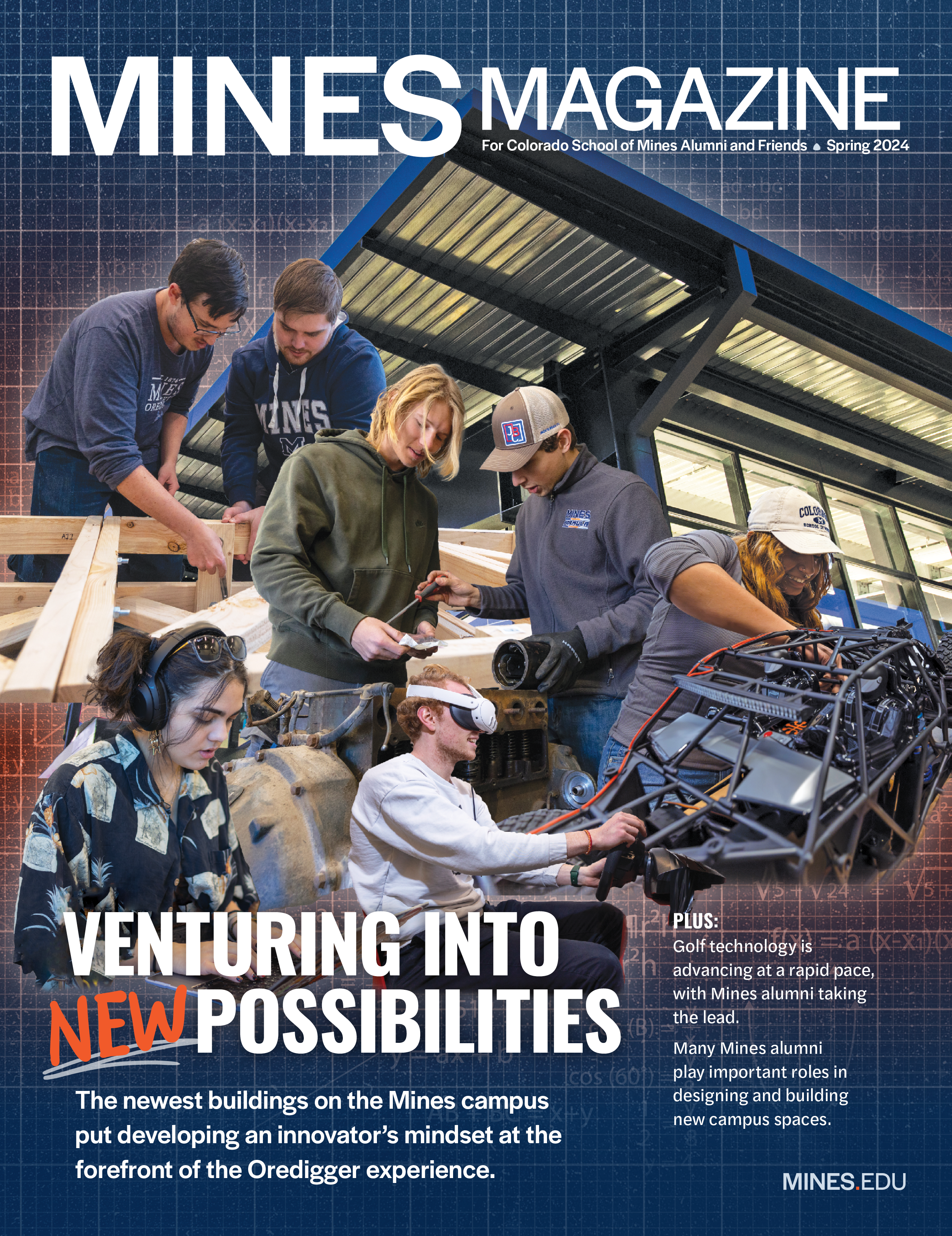Homesteading the final frontier
*This story originally appeared in the 2018-19 edition of the Colorado School of Mines Research Magazine.*
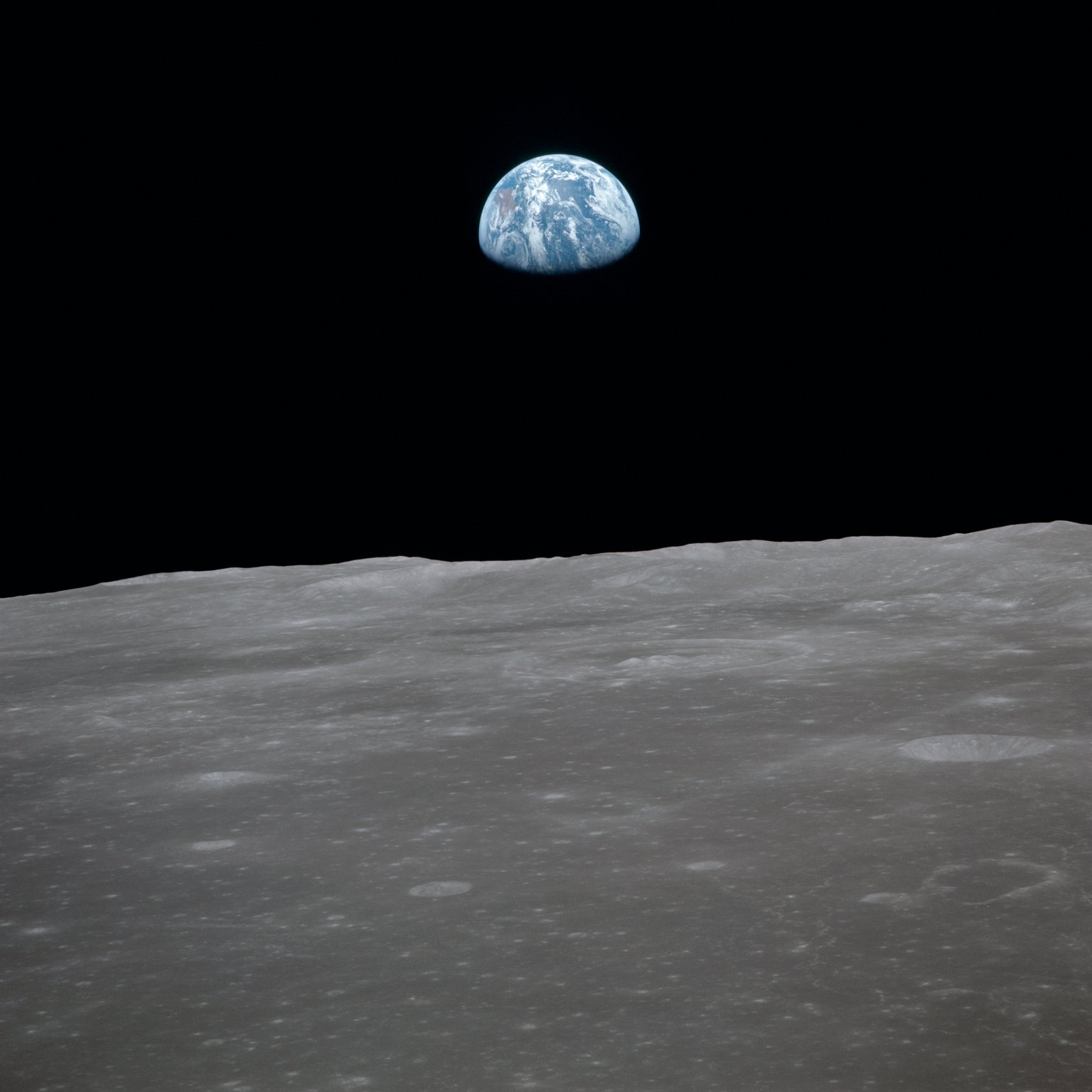
Scientists have dreamed for years of harnessing the plentiful resources in space. Now, Colorado School of Mines researchers are turning those dreams into solid plans, designing everything from probes and excavation equipment to systems that can beam down enough solar energy to supply all of Earth’s needs, forever.
Though these ideas may sound far-fetched, a quick tour of Mines’ Space ResourcesProgram reveals an accelerating series of efforts that are creating a blueprint for the next phases of space exploration and development. The Mines program, the first of its kind anywhere, launched last year with pilot courses that attracted scientists and engineers from around the world. Starting next fall, it will offer courses leading to graduate certificates and master’s and doctoral degrees.
Though the Space Resources Program is new, Mines researchers have been studying how to extract and use space materials for over 20 years. Much of the work has taken place at the Center for Space Resources, headed by Mechanical Engineering Research Associate Professor Angel Abbud-Madrid, who now leads the program.
Every year, the Center for Space Resources hosts a roundtable attended by engineers from NASA, United Launch Alliance, Honeybee Robotics and other private companies, as well as Mines faculty. It’s more than just talk—researchers are getting down to the nitty-gritty of building and testing equipment. At the end of this year’s roundtable in June, they will form teams in a workshop to devise techniques for extracting ice from the moon.
At Mines, professors and students are also working with NASA engineers and private companies to develop an entire space economy, replete with the necessities for sustaining human life, as well as build transportation systems, manufacturing facilities and tourism.
Eventually, this space ecosystem is designed to become self-sustaining, in addition to serving as a jumping-off point for further exploration.
Here’s a look at how the space economy will unfold, propelled by Mines research.
An abundance of resources
The cislunar space—the space between Earth and the moon—is full of natural materials that could sustain life beyond the Earth’s atmosphere or be harvested for terrestrial use. The moon also has an abundance of water in the form of ice, particularly in its polar regions.
Asteroids also contain large quantities of water, as well as aluminum and silica, which could be used to build solar panels. A single giant asteroid named Psyche 16, which NASA plans to visit in the mid-2020s, contains massive quantities of nickel and iron that could be worth $10,000 quadrillion—way more than the entire $78 trillion global economy—if the materials could somehow be extracted and brought down to Earth.
Farther afield, Mars abounds in water, as well as oxygen, nitrogen, iron, titanium, nickel, aluminum and soil that could be used as a radiation shield.
And the sun? Its power output is 10 trillion times the consumption of the entire human race.
The decision to tap into these resources, however, must be based on economic reality and sustainability, just as it is on Earth.
Right now, getting to space is expensive. It costs $10,000 to launch a single pound of equipment or material into space, Abbud-Madrid said. The economic burden of getting there has precluded private companies from taking a serious interest in space’s resources until recently. But the picture has started to change.
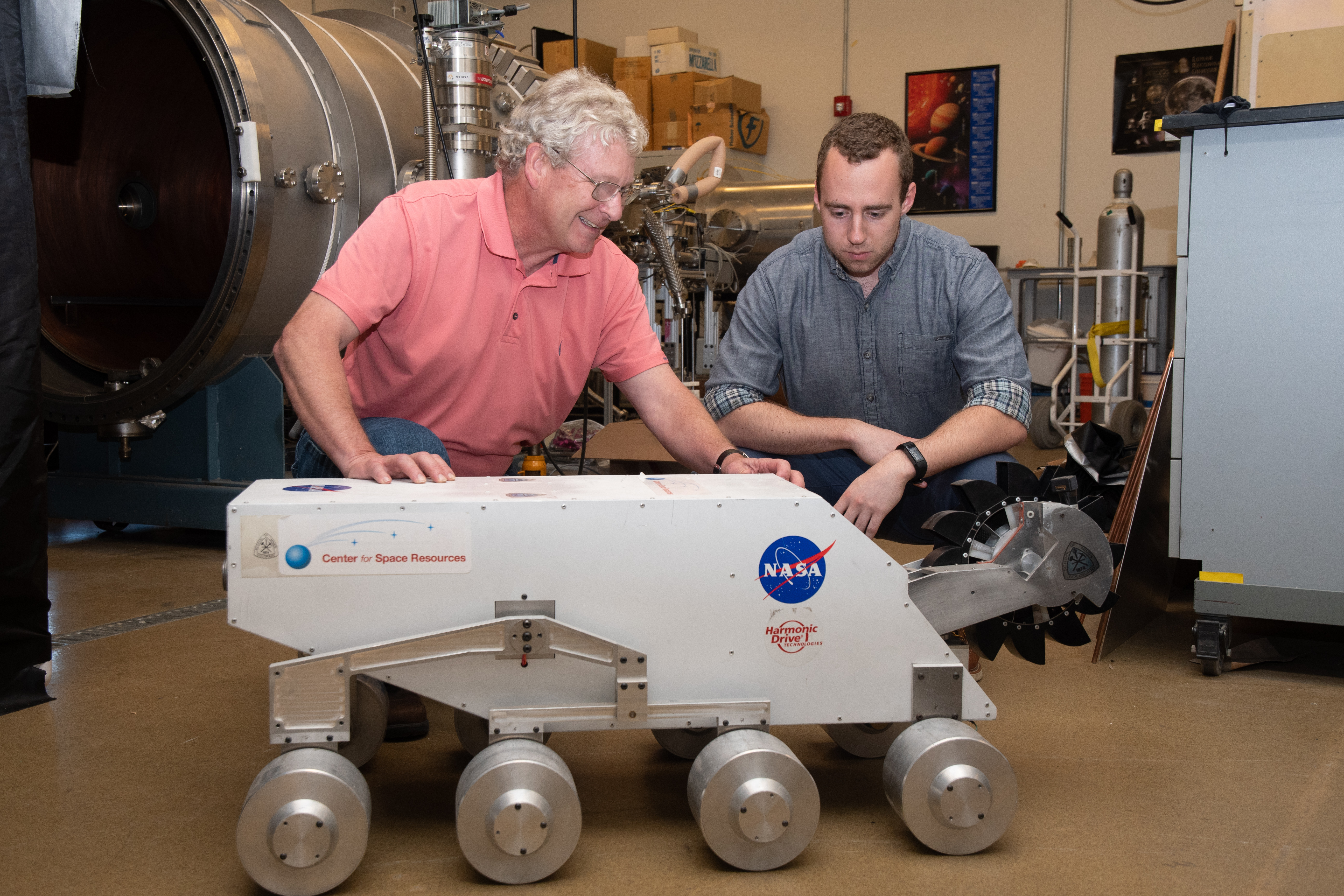
Making transportation economically feasible
The main reason space travel is exorbitantly expensive is the launch, said George Sowers, a Mines mechanical engineering professor of practice who is part of the core faculty of the Space Resources Program. Climbing out of Earth’s gravitational field is difficult, and the more weight that is added to a space vehicle, the harder it becomes. Because spacecraft must carry enough fuel not only to take off but to fulfil their missions and return to Earth, their payloads are massive. Ninety percent of a rocket’s weight consists of the fuel needed to launch a small capsule containing astronauts and supplies.
“Imagine if you drove from Los Angeles to New York and you had to take all your gas with you,” Sowers said. “Then you’d need a bigger car, which uses even more fuel. The process spins out of control, and pretty soon you’re driving a giant tanker truck.”
That’s the vicious circle space entrepreneurs(???) are caught in today. But if astronauts could lighten their load by refueling in space, the scenario would change dramatically. The cost of landing a kilogram of mass on the surface of the moon could be reduced from $35,000 to $11,000, Sowers said.
Affordable transportation is the key that unlocks the economic potential to make space exploration and development a reality for private companies, including United Launch Alliance, where Sowers was president before joining Mines last year.
Using space resources would make it possible. All that water on the moon and in asteroids could be broken down into hydrogen and oxygen, the most efficient chemicals that currently exist for propelling rockets. Spacecraft could fill up at cislunar gas stations instead of transporting all their fuel from Earth.
Refueling in space would also make rockets less expensive to build. “You wouldn’t have to design spacecraft to withstand the violent force, fire and smoke of a rocket launch,” Sowers said. Lighter, thinner spacecraft are appropriate for space, where there is no resisting gravity. When infrastructure is in place, they could be built in situ with local materials and replicated through 3D printing.
Mining in space
Once in space, astronauts will need the right tools to extract the water they need for personal consumption and fuel. To create these tools, Sowers, Abbud-Madrid and Mechanical Engineering Research Assistant Professor Christopher Dreyer, another member of the Space Resources core faculty, are studying the properties of the moon’s surface, known as regoliths, and the ice that surrounds them. They have developed an experimental probe to measure the depth, temperature and compaction of the regolith and ice mixture to determine what kind of instruments are needed to penetrate it.
“It could be as hard as concrete, or even harder. Or it could be like dirty snow,” Dreyer said. In addition to adjusting for a variety of conditions, drill bits need to be made of special materials to withstand temperatures of 40 degrees Kelvin (negative 387 degrees Fahrenheit).
Another possibility is extracting water from asteroids. Dreyer and a co-investigator are working under a NASA grant—Mines received $140,000—to do just that. In a large vacuum chamber at Mines, they blast the surface of asteroid simulants (terrestrial materials developed by minerology experts that are mixed with water to form a paste) with concentrated beams of light. As the mock asteroids heat up, they fracture, releasing water vapor, which collects on a plate of stainless steel chilled with liquid nitrogen. There, it freezes, adhering to the plate. “We call it a cold trap,” Dreyer said.
In space, an asteroid would be contained in a giant bag maneuvered into place by spacecraft and sealed. Solar energy would be directed at it, and ice that forms on the cold trap would be melted into water or separated into hydrogen and oxygen to use as fuel.
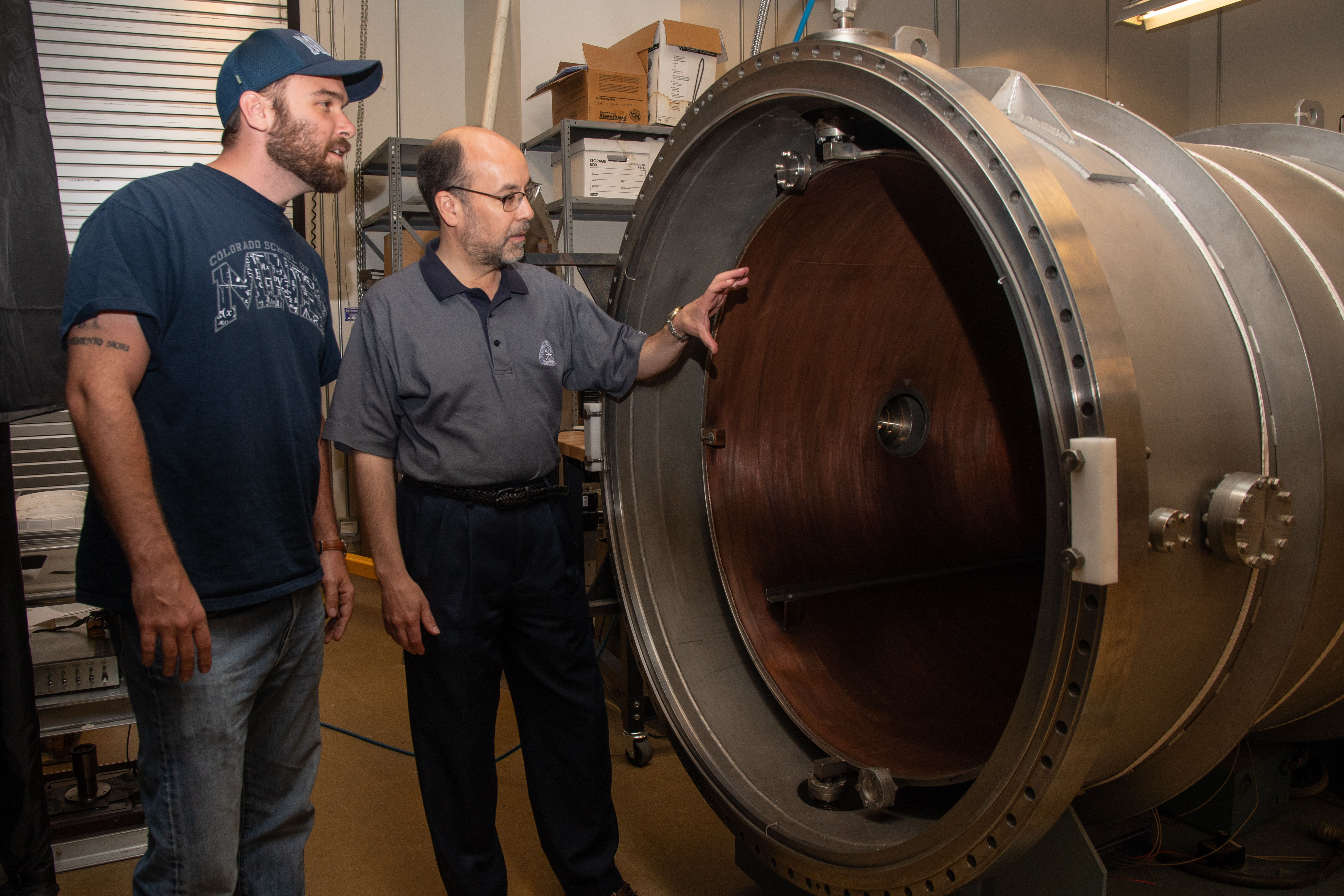
Harnessing solar energy
As transportation becomes cheaper and more space resources are collected, studied and used, the space economy will expand. “An infrastructure will slowly develop, always with a trade-off in mind of how much it costs to ship something to space versus making it in space,” Sowers said.
With an infrastructure in place, one of the most exciting developments could be providing solar energy to Earth, a project that will likely grow in importance as Earth’s own resources are depleted. Space materials could be used to build an enormous solar power system that would beam enough of the sun’s energy to supply the needs of the entire planet.
On Earth, rectennas—large, rectangular grids of wires spaced several feet apart and mounted 20 feet above the ground—would act as receivers, Sowers said. Farmers could grow crops and plow the land beneath them with no ill effects from the sun’s microwaves.
Because so much strife results from disputes over resources, having an unlimited energy source could usher in more peaceful times. “In a post-scarcity world, there is no more reason to have conflict,” Sowers said. Instead, people might spend their money on pursuits such as space tourism, something billionaires are already investing in. Settlements on the moon or in cislunar space could develop, with space stations that serve as launching points for journeys to Mars and beyond.
Though these later-stage developments are still a ways off, the process for using resources in space is well underway and could happen sooner than many people think. A NASA mission is currently cruising to the asteroid Bennu, where it is expected to land in December 2018 to collect materials and probe for water. If private companies maintain their interest, extracting resources from asteroids could start within a decade, researchers say. NASA has said it wants to send humans to Mars in the 2030s.
But the journey into cislunar space and beyond is not likely to be a smooth one. It will proceed in fits and starts as scientists adjust their theories to yet-unknown conditions. In addition to the physical hurdles, a space economy will raise tough new questions about international rights and ownership. Despite these challenges, progress is bound to continue—as long as scientists and engineers can make good use of the materials at hand.
“If we learn how to live off the land in space, it will allow us to keep going further and further,” Abbud-Madrid said.
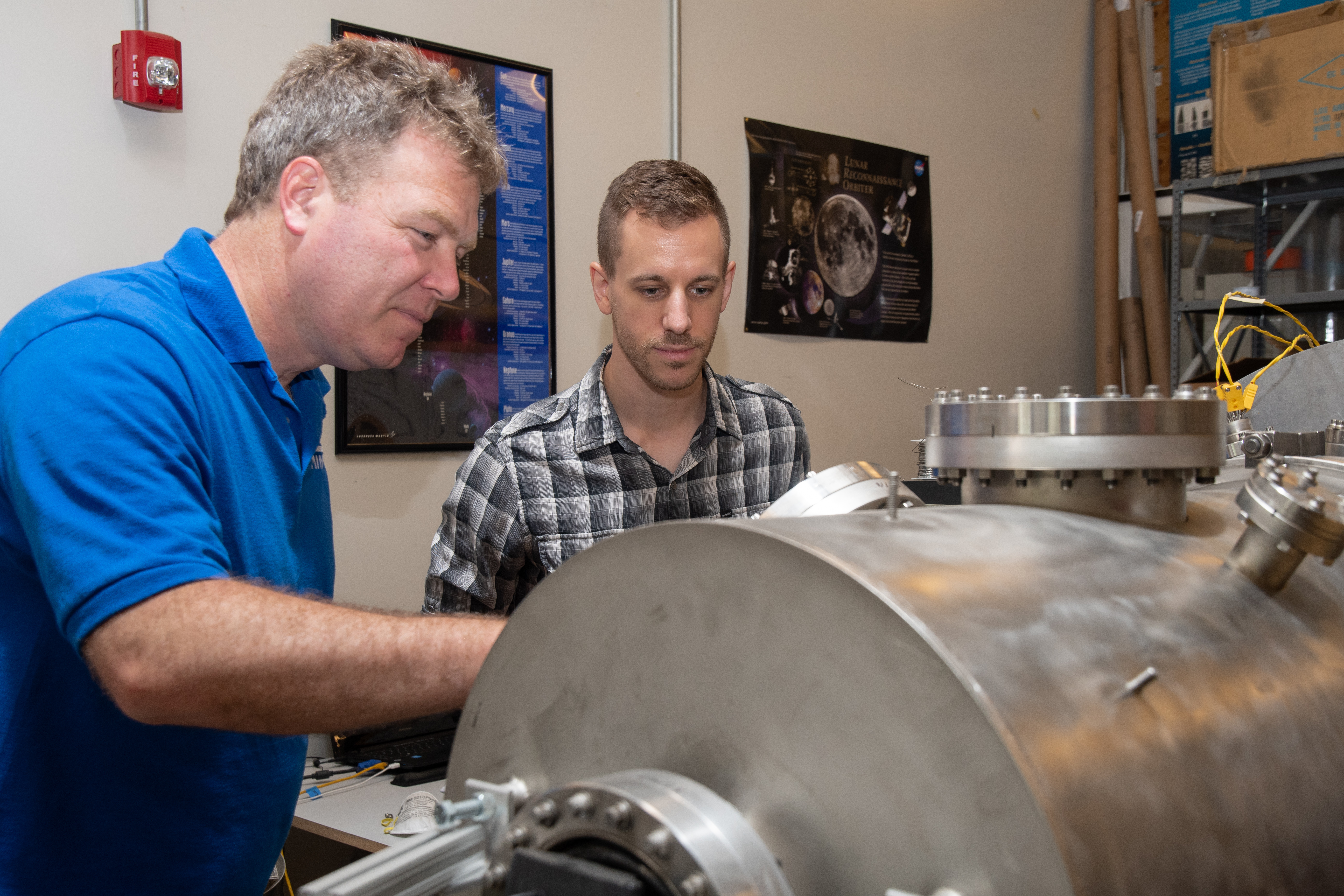
Mining in space: A multidisciplinary pursuit
The expertise needed for using space resources spans almost every discipline at Mines.
Developing drills and excavators is a traditional part of mining engineering. Both faculty and students, some of whom have won prizes in NASA competitions, are involved in re-engineering traditional mining equipment to work on the moon and planetary surfaces.
Once resources are extracted, skills in chemical engineering and metallurgy come into play to process metals and turn water into fuel.
Computer engineering is needed to develop the 3D printing that will enable astronauts to make spare screwdrivers and wrenches, and eventually, to develop full-scale manufacturing.
Communications will also be vital. Computer Science Associate Professor Qi Han is developing a network to coordinate multiple space vehicles as they take measurements of space bodies and send their information to a command-and-control spaceship that will transmit the data to Earth.
“We utilize every single department of the school,” Abbud-Madrid said. “That’s why Mines is so well-suited to having a Space Resources Program.”


